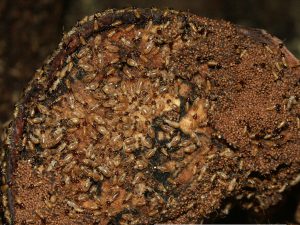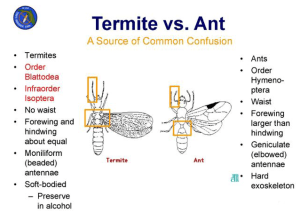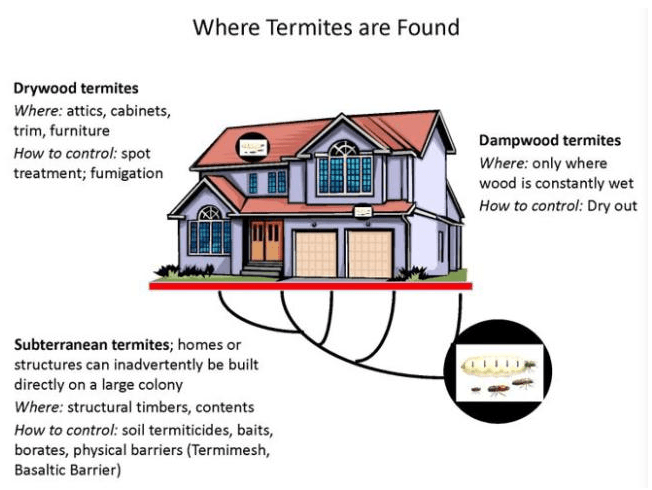Hello avid readers! Next week is termite awareness week. Did you know termites have been on earth for 100 million years?! Florida is home to 21 species of termites. Only a few of these are considered pests. They tend to be differentiated based on their lifestyle and habitat and are sometimes confused with ants. Do you want to know more about termites and how to recognize them? If so, read more as I write about termite awareness week!

Why Termite Awareness Week?
Termites are important to our ecosystems as they convert wood back into soil-making components. However, they can also be pests. According to the Pest Management University (PMU), “Every year since 2011, the first week of spring has been designated by NPMA as National Termite Awareness Week. This year, it takes place from March 12 to 18. NPMA wanted to raise awareness of this pest group because they are typically cryptic in their behavior and can cause extensive damage before homeowners even notice something is amiss. Additionally, this time of year is usually the time when termites swarm. Termite Awareness Week aims to provide more information on these insects and hopefully save homeowners a world of headaches and money later. Each year, termites cause over $5 billion in property damage in the U.S. Hopefully, National Termite Awareness Week encourages homeowners to inspect their properties for termite infestation and minimize damage. For more information, paste the following into your browser of choice: TERMITE AWARENESS WEEK – March 12-18, 2023 – National Today”
Types of Termite
As mentioned above termites are often categorized based on their lifestyle into several categories. These include subterranean, drywood, dampwood, and higher termites. FLREC has a description of each of these groups and distinguishes the native and invasive species. One big giveaway when differentiating termites from ants is the antennae. Ants have geniculate or elbowed antennae while termite antennae are moniliform or straight.

Credit: Jane Medley, UF/IFAS
According to the PMU, “Subterranean termites usually maintain contact with the soil which can make it difficult for typical homeowners to detect an infestation until the population is huge. Drywood termites live aboveground and cause less damage than subterranean termites and leave little piles of frass which can help homeowners to detect the problem.”

Credit: Nan-Yao Su, UF/IFAS
Termite Prevention and Control
While control of termites is usually a job for a professional there are a few things a homeowner can do to prevent infestations. Termites can damage wood and paper products. They can damage the home directly by consuming studs, framing material, and trim. They can also damage cabinets, furniture, and books within the home. If you think you have termites or see termite damage, you can try to collect one of the insects for identification. This is always the first step in a good integrated pest management plan. There are a couple locations you can send them to for ID.

Credit: Faith Oi, UF/IFAS
To prevent termites from colonizing your home, you can try the following
- Eliminate wood to ground contact
- Remove wooden debris from the property
- Stack firewood away from the home
- Maintain 6 inches of space between the siding of the home and the ground or mulch
- Ensure water runs away from the home, not towards it
- Direct irrigation away from walls
- Place landscape plants two feet from the exterior walls
- Avoid wooden landscape timbers for edging
- Trim tree and shrub branches away from the walls and roof
- Have an annual termite inspection by a professional
This and more information has been gathered in ENY-2044/IN1277: Termite Prevention and Control
Conclusion
Most termites are important members of our ecosystems and are not pests. However, it is good practice to use preventative measures to protect your home from the few that are. If you think you might have termites try to identify the insects or call a pest management professional. You may want to set up annual inspections, and the professional may suggest multiple management tactics for a well-rounded strategy. Thank you so much for flying by and come back later this month to hear about Women in Entomology as this is women’s history month.
Source: UF/IFAS Pest Alert
Note: All images and contents are the property of UF/IFAS.



